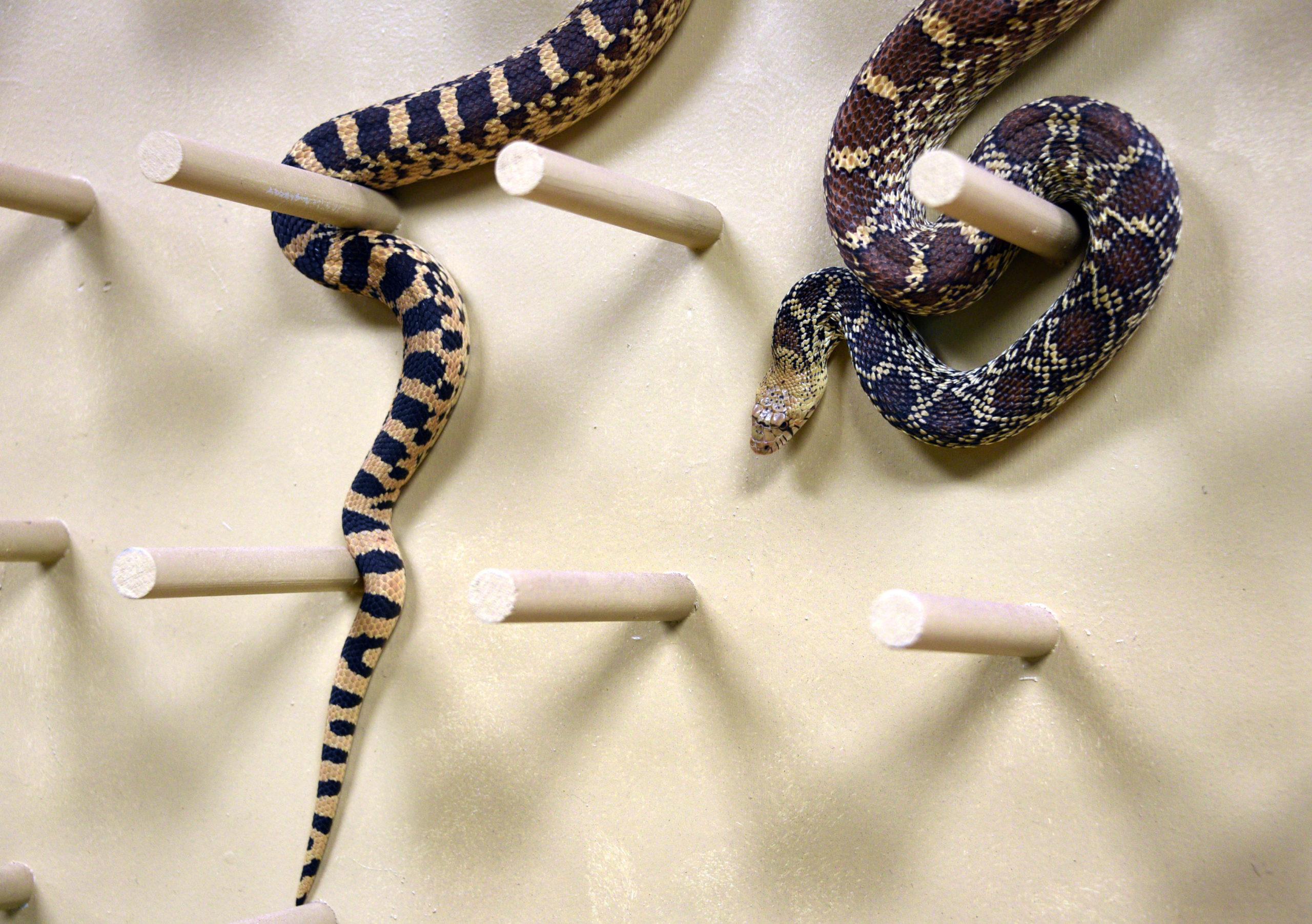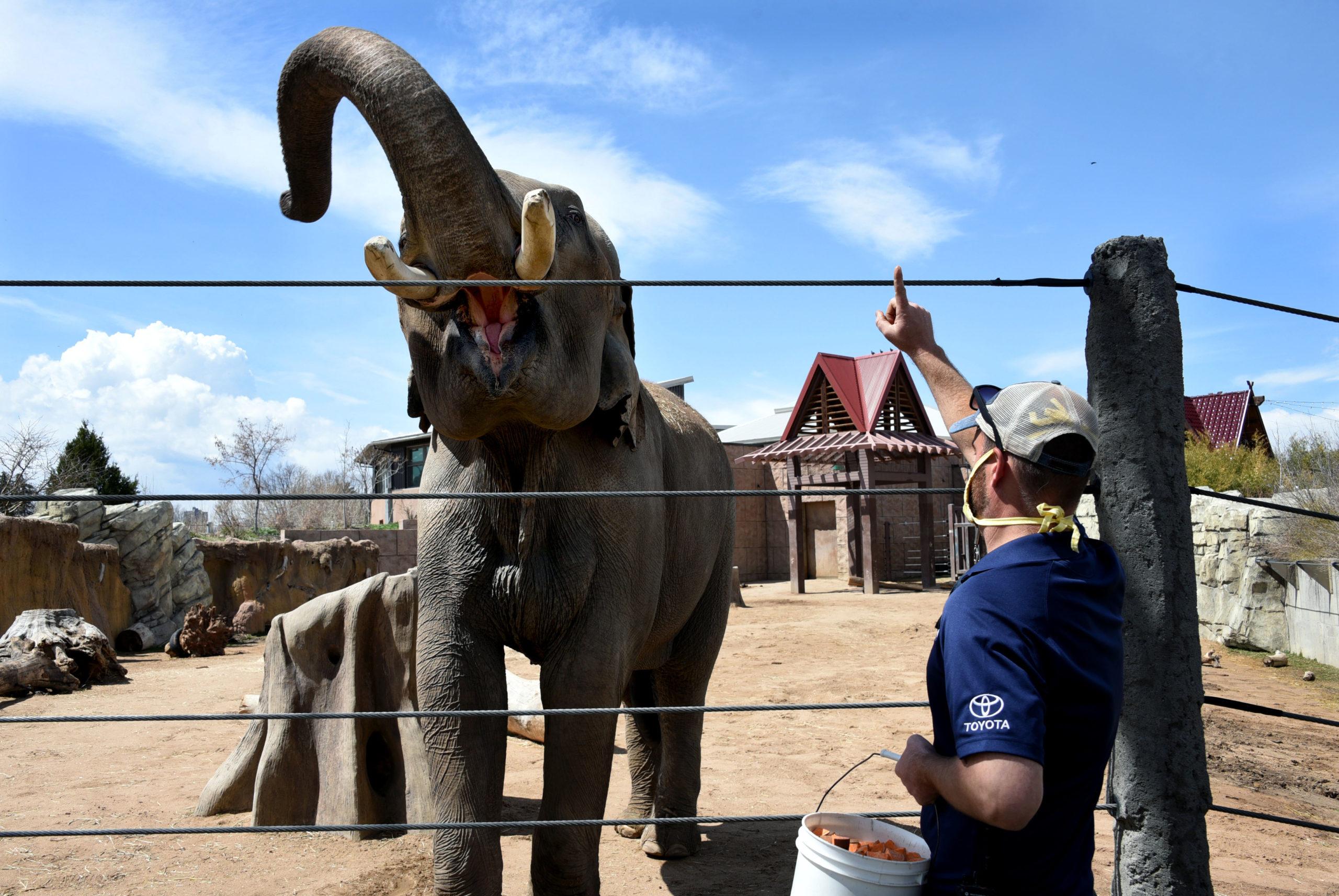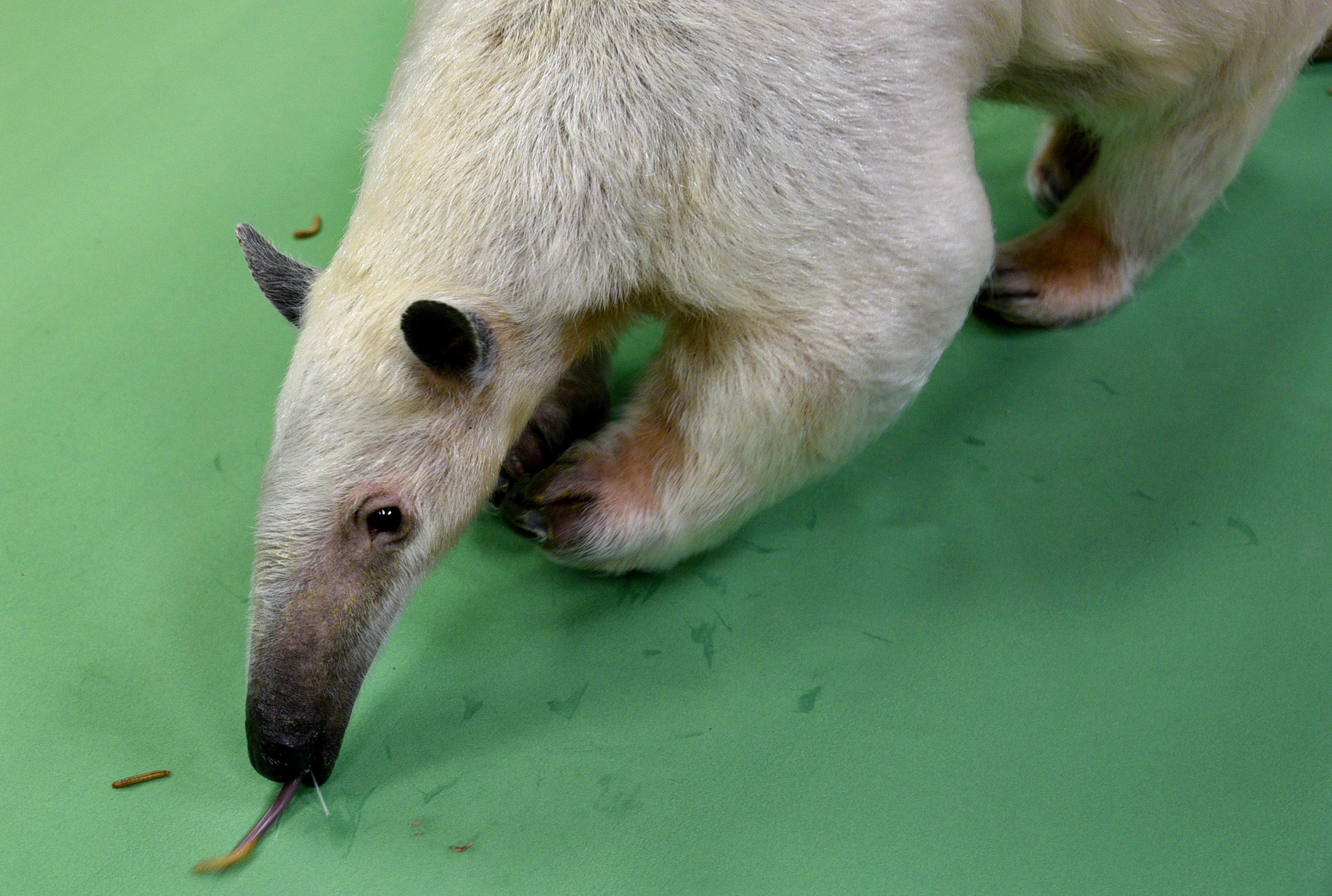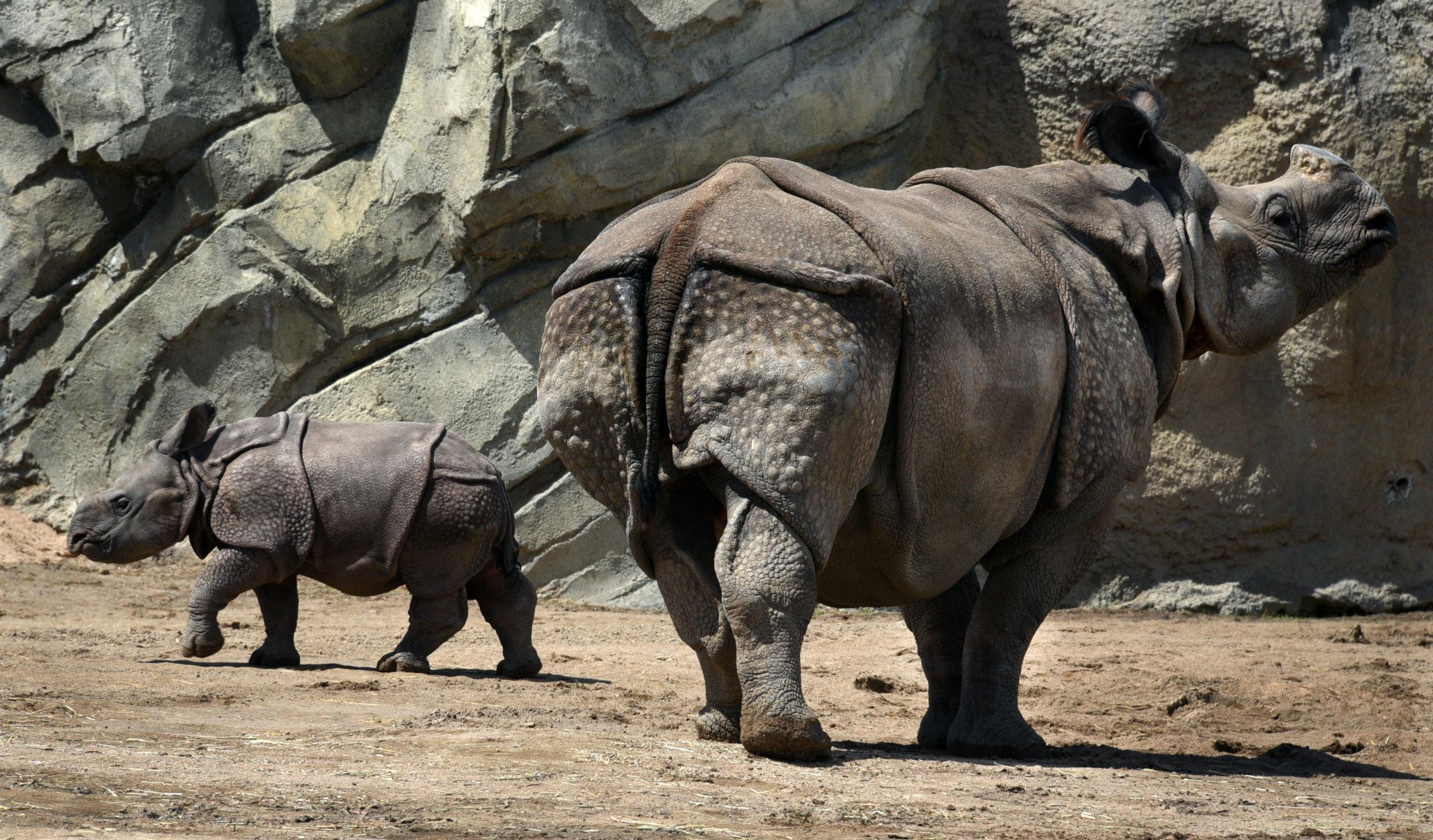On a recent 65-degree sunny day, the Denver Zoo was unnaturally still. A maintenance worker wearing a face mask pressure washed the timbers of the zoo entrance. The nearby Samburu Grill was empty, and pathways around a vivid garden of daffodils were deserted. No one sat on the long rows of benches in the elephant amphitheater.
"A Sunday with this beautiful weather, we would have seen maybe five to seven thousand people on grounds at a time," said Emily Insalaco, who leads the animal care team. "And now, not only is it really quiet, but we're really thinking about what that's going to look like in the future."
March to August is normally the Denver Zoo's busiest and most lucrative season, taking in about $3 million each month. Much of it comes from ticket sales, memberships and concessions.
That funding has dried up, as it's been closed to the public since mid-March. But with 3,000 animals to feed and care for, the Denver Zoo hasn't been able to lock the doors, turn off the lights and wait out the coronavirus pandemic. The zoo has spent a million dollars a month on upkeep, and without visitors, it's struggling to pay its bills.
To save money, the zoo's leadership group has taken salary cuts, withdrawn money from its endowment, and cut more than a hundred workers and vacant positions. The welfare of the animals is paramount, zoo leaders say, so they have kept veterinarians, animal keepers and nutritionists on staff. Without the thousands of hours that volunteers contribute, the burden is even heavier on the remaining staff to maintain clean habitats and gardens on its 80-acre facility.
"Just to move food and move waste and manage water, we're not only continuing to spend, but we have no revenue to support that spending," said Bert Vescolani, zoo president and CEO. "Boy, there's days you look at it, and you go, 'Wow, man, how are we going to get through this?'"
After wringing out one and a half million dollars from the annual operating budget, the staff looks for other ways to cut costs.
So far the supply chain has held for local fresh meat -- ground and on the bone -- for the tigers, lions and leopards. Frozen fish might replace fresh fish for the sea lions.

© Sonya Doctorian
All the animals have specific dietary needs. Adelaide the kookaburra eats thawed baby mice. Toro the bull snake eats three thawed mice or young rats every two weeks. Rio the tamandua, a type of anteater, can easily down 10,000 ants in a single meal. In this time of frugality, she might be offered less expensive freeze-dried insects instead, since they're widely available and nutritious, Insalaco said.
"And we haven't tried that with our animals yet," she said. "So there are a lot of ideas like that we can still explore."

© Sonya Doctorian
One of the zoo's main attractions is North America's largest all-male herd of Asian elephants, which are studied for their socialization behaviors. Near the habitat where the five elephants live, a few keepers in face masks looked over Bodhi, a five-ton Asian elephant, and Groucho, who weighs in at six tons. A keeper gave voice cues. The elephants opened their mouths for inspection, bowed to their knees and turned in profile so the keepers could gauge their movement and condition from behind the barrier. The keepers tossed sweet potatoes, carrots and apples to them as a reward.

Before the pandemic, this training session would have been a demonstration for 500 visitors in the nearby amphitheater, the zoo's largest venue. Now, Insalaco and her team are thinking up creative ways for visitors to encounter the animals once the zoo reopens.
"Maybe instead of sitting down in that amphitheater with a lot of other guests, maybe it looks more like sessions happening between staff and elephants throughout the yards throughout the day and maybe you get to see all of those as you walk through," she said.
The reopening could come in early June, and Veloscani said the next step will be assessed after further guidance from Mayor Michael Hancock.
"We'd love to open earlier rather than later, and we can mobilize fairly quickly to do that," Veloscani said. "That would be fantastic. But, safety of our guests, safety of our staff and safety of our animals will not be compromised."
The reopening would come with measures to encourage social distancing: allowing just 4,500 visitors, a fraction of its capacity of more than 20,000; online timed ticket entry; more hand-washing stations; and setting up one-way traffic flow to direct people through the grounds. Large events and weddings are on hold through summer.
Nonprofits everywhere are struggling right now, as fundraisers have been canceled and underwriting is hard to come by. Like everybody else, the zoo is counting on community support.
"Every dollar is a precious dollar," said Vescolani.
The zoo set up an emergency support fundraiser on its website last month, which has raised $283,762 from more than 2,000 individual donors. And it held a naming contest for its first-ever baby Indian rhinoceros at a dollar donation per vote. It raised far more than previous naming contests: $39,000, which includes a $10,000 matching gift. As promised, the Zoo will donate $5,000 of the earnings to the International Rhino Foundation to help rhinos in the wild.
Vescolani says the zoo has enough cash reserves to get to reopening. But reopening at a fraction of its capacity for the next several months means a fraction of the revenue for the foreseeable future.
Vescolani says whatever happens, the animals will come first.
"We have no plans to move any animals out of our care," he said. "You can't just say, hey, I've got an orangutan that we can't keep anymore. That's never a plan for us. We have to plan for their entire lifespan for every animal we have."
The Zoo has received federal pandemic aid to help offset some of the projected losses through the summer. Next year, Vescolani expects to get less of the local cultural tax money that usually helps pay its bills.
"It could be as much as 35 percent down," he said. "2021 is going to be a very challenging year to plan for."

© Sonya Doctorian











